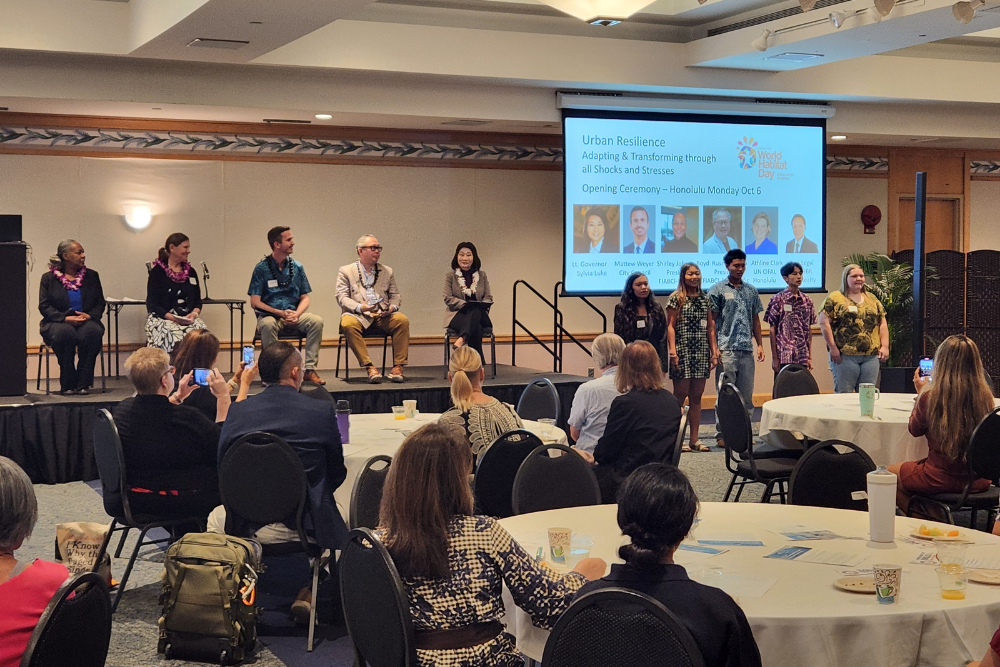

Urban October: a Global Dialogue on Affordable Housing
Housing is generally considered affordable if its cost is not superior to 30% of an individual or a family’s revenue. Unfortunately, in most cities around the world, people now spend more than 50% of their earnings for their residence. Only a tiny fraction of current residential construction for rent or for sale meets the demand for affordable housing.
Urban October, as designated by UN-Habitat, is therefore the ideal time to consider what each of us can do to quickly increase the supply of affordable homes before the world population rises by two billion people in the next three decades as forecasted by the United Nations. In Honolulu, Hawaii, both public and private sectors as well as the Hawaiian people came together to celebrate UN World Habitat Day and discuss potential partnerships on affordable housing, an issue the local residents are very familiar with.
With the month fast approaching its end, the moment has come to look back at some of the conclusions of the meetings held under the initiative “A Global Dialogue on Affordable Housing: Policy, Finance, Technology & Sheltering”:
- Policy: speeding up permits, selling or leasing unused public land, providing higher density permits, involving residents in urban planning.
- Financing: using crowdfunding to provide equity to developers, giving tax incentives to individuals and entities willing to provide capital, reaching out to charitable foundations.
- Design, construction materials and other techniques: Modular construction, concrete printing, replicable interior design allowing multiple façades, repurposing used shipping containers.
- Fast sheltering: using replicable models, locating shelters as close to transportation as possible.
A final report showcasing the most effective and creative solutions will be sent by mid-December to UN-Habitat, the World Economic Forum, MIPIM, and all the organizations supporting this initiative, in an effort to inspire both the public and private sector to implement new ideas ultimately resulting in significantly higher number of housing units built faster and better.




















































































































































































































































































































































![[Webinar Summary] COVID-19: What lies ahead for the Real Estate Industry?](/uploads/news/9i1w05plq2ksbcswuyj5ze2nr.png)






























































































